World’s largest frogs build their own ponds for their young
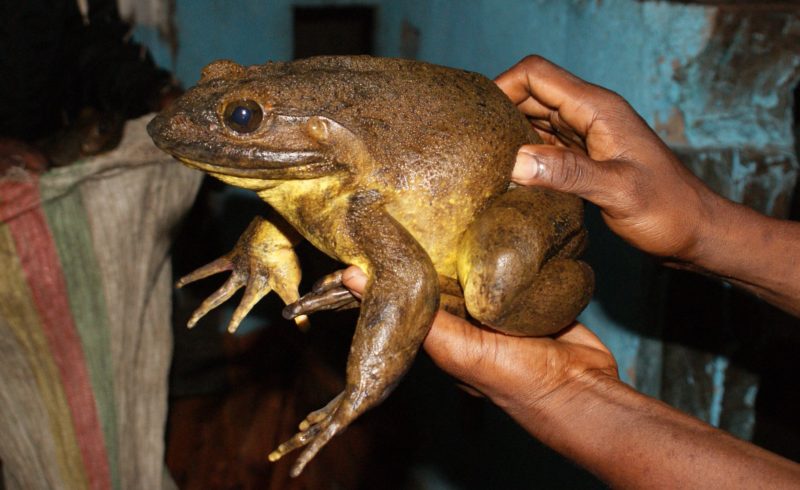
An adult Goliath frog caught by a local froghunter
The first example of “nest”-building in an African amphibian, the Goliath frog, has been described in a new article in the Journal of Natural History, and could explain why they have grown to be giant.
Researchers observed adult Goliath frogs in the wild and found that they move rocks weighing up to 2kg while building ponds for their young, which they then guard. Goliath frogs themselves weigh up to 3.3kg and their bodies reach over 34cm, without including their legs.
“Goliath frogs are not only huge, but our discovery shows they seem to be attentive parents as well,” says author Marvin Schäfer from the Berlin Natural History Museum. “The little ponds they make at the edges of fast-flowing rivers provide their eggs and tadpoles with a safe haven from sometimes torrential waters, as well as from the many predators living there. We think that the heavy work they put into excavation and moving rocks may explain why gigantism evolved in these frogs in the first place.”
Despite their renown, they’re found only in Cameroon and Equatorial Guinea and little is known about their biology, particularly their reproductive behaviour. Numbers of the endangered species have declined by more than 50 per cent in just 10 years, due to overhunting and deforestation; and researchers first learned about the unusual level of parental care they provide from local frog hunters, who trap adults for bush meat.
To investigate the behaviour, two researchers waded along opposite edges of the Mpoula River looking for breeding sites. At first, they could only distinguish them by finding eggs or tadpoles. However, they learned to spot material excavated and piled up in a way that defied the effects of the water current. They identified 22 potential breeding sites, 14 of which contained nearly 3,000 eggs each, spread across the entire area. At the nest which showed the most recent signs of activity, they recorded a time-lapse video using a camera trap.
The scientists found that Goliath frogs create three different types of pond. For some, they simply clear naturally-occurring rock-pools of leaf-litter and debris. The effect is still strikingly different to surrounding puddles, which have thick layers of leaves, debris and gravel. For the second type, frogs dig out leaf litter and gravel from shallow pools and push it to the edges, forming a dam. Dams are most obvious in the third type, for which frogs clear depressions of shallow water of any large stones, moving them to edge and creating circular pond. This was the most reliable type, as eggs were least likely to spill out or become over-flooded after heavy rain.
Infrared time-lapse revealed an adult spending all night guarding a nest from predators, only ending the vigil just before dawn. The scientists were unable to determine which sex was responsible for building ponds or which for guarding them, although one hunter who described the behaviours in detail suggested that males do the construction while females are the guards. They didn’t directly observe the cleaning or digging, but over five days followed progress of a nest, from the first digging attempts to the depositing of eggs.
Dr Mark-Oliver Rödel, project leader and president of Frogs & Friends, says: “The fact that we’ve only just discovered these behaviours shows how little we know about even some of the most spectacular creatures on our planet. We hope that our findings, combined with further ongoing research, will improve our understanding of the needs of the Goliath frog so we can help support its continued survival.”
NOTES
The study was funded by Amphibian Funds in cooperation with the Association of Zoological Gardens, with additional supplies from Frogs & Friends and the Vienna Zoo.
The labels have been added to this press release as part of a project run by the Academy of Medical Sciences seeking to improve the communication of evidence. For more information, please see: http://www.sciencemediacentre.org/wp-content/uploads/2018/01/AMS-press-release-labelling-system-GUIDANCE.pdf
For a copy of the study, please visit the Taylor & Francis Newsroom Embargo Area: https://newsroom.taylorandfrancisgroup.com/embargoed-releases/
To arrange an interview, please contact:
Dr Mark-Oliver Rödel, Berlin Museum of Natural History
Phone: +49 (0)30 889140 8571 / +49 (0)30 40056833
Email: mo.roedel@mfn-berlin.de
For more information, please contact:
Krystina Sihdu, Press & Media Executive
Email: newsroom@taylorandfrancis.com
Tel.: +44 (0)20 7017 6928
Follow us on Twitter: @tandfnewsroom
The article will be freely available once the embargo has lifted via the following link: http://tandfonline.com/10.1080/00222933.2019.1642528
Image 1. Nest type 2 with old eggs (grey mass in middle) leaf litter piled up in front.
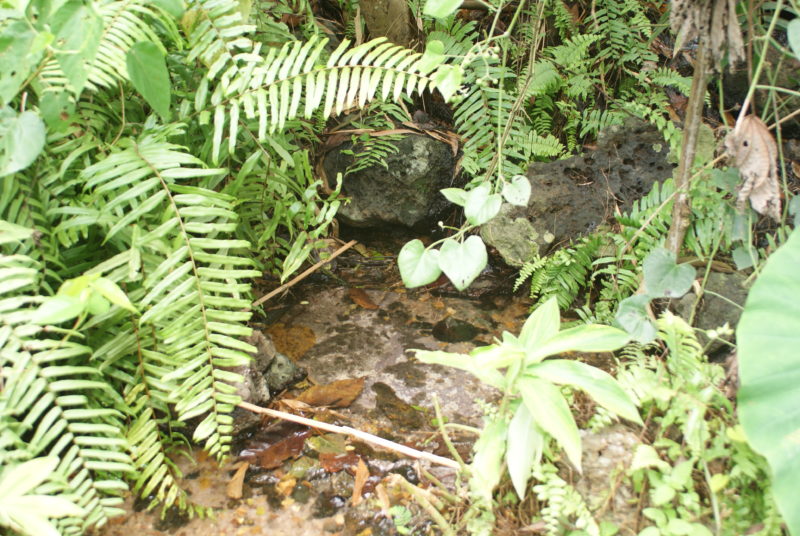
Image 2. Nest type 2 with fresh eggs. Eggs merged to a grey mass after 1 to 2 days, making it hard to distinguish them from the ground.
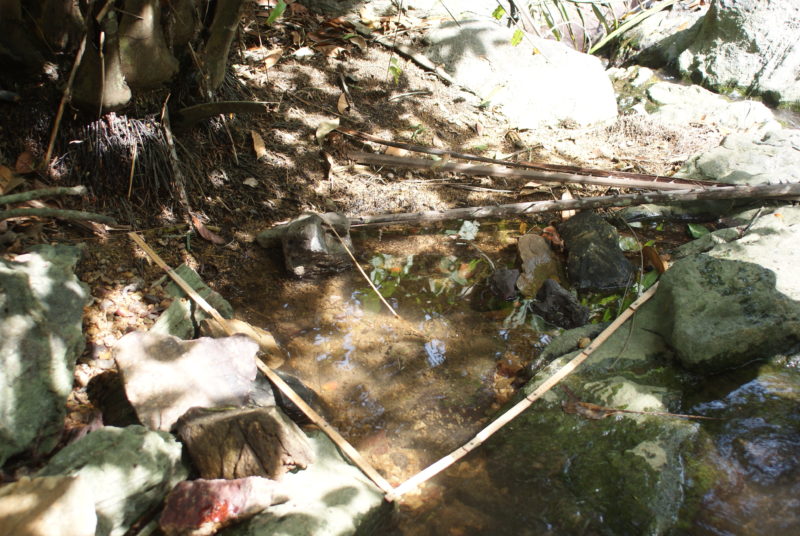
Image 3: Recently metamorphed juvenile frog, often found in vegetation near nesting sites, indicating they stay around their nursery for some time.
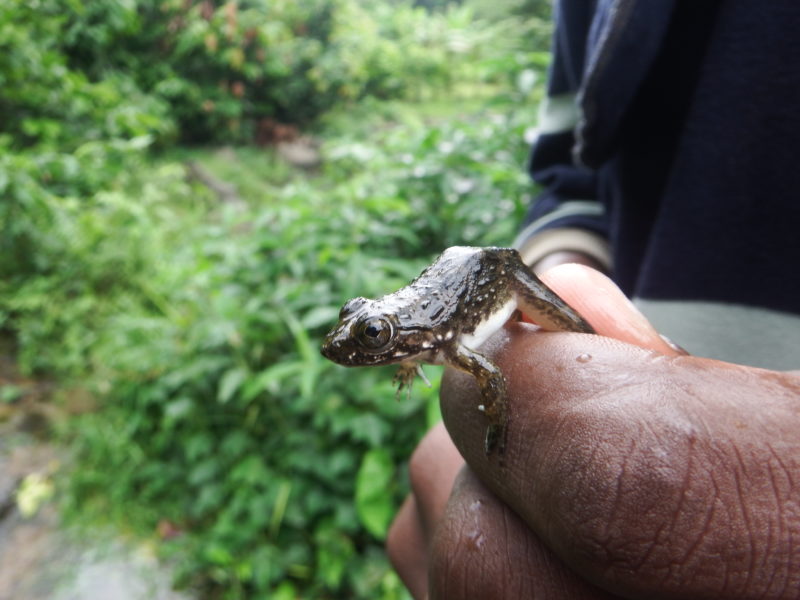
Image 4: Goliath froglets measure less than 18 mm when they leave their pool nursery
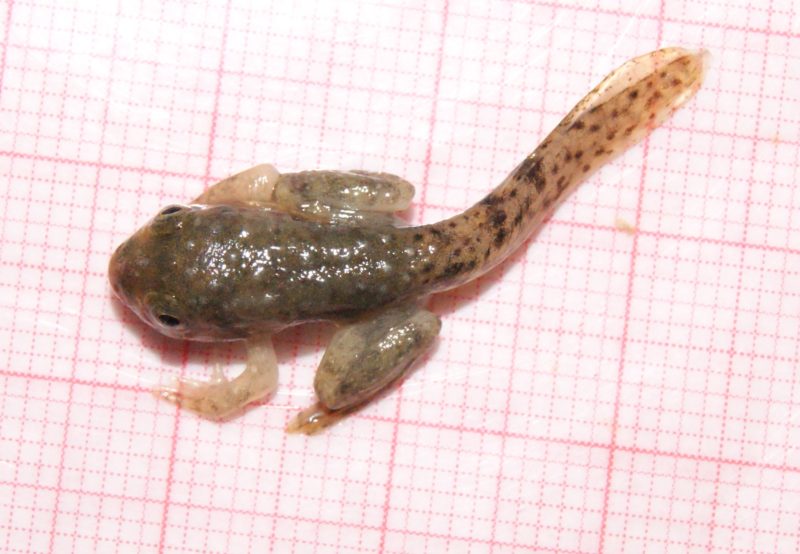
About Taylor & Francis Group
Taylor & Francis Group partners with researchers, scholarly societies, universities and libraries worldwide to bring knowledge to life. As one of the world’s leading publishers of scholarly journals, books, ebooks and reference works our content spans all areas of Humanities, Social Sciences, Behavioural Sciences, Science, Technology and Medicine.
From our network of offices in Oxford, New York, Philadelphia, Boca Raton, Boston, Melbourne, Singapore, Beijing, Tokyo, Stockholm, New Delhi and Cape Town, Taylor & Francis staff provide local expertise and support to our editors, societies and authors and tailored, efficient customer service to our library colleagues.